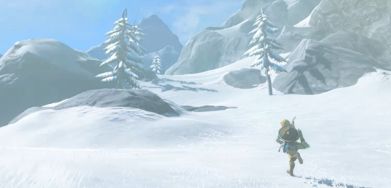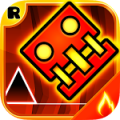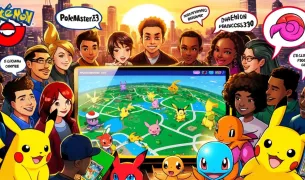The Legend of Zelda: Breath of the Wild is a spectacular game that has gripped the hearts of countless players since its release. Released by Nintendo in 2017, it is a captivating creation that managed to materialize the seemingly impossible task of meshing the open-world gaming setting with the elements of the iconic Legend of Zelda universe. Breath of the Wild (BOTW) comes loaded with a profound immensity of exploration, combined with an intricate narrative that together creates a gaming experience of unparalleled proportions.
Enter the Wild
One of the striking features that BOTW introduces is its expansive open-world gaming environment. Unlike the segmented and linear gameplay characteristic of earlier versions, BOTW features a vast, seamless map, granting players the freedom to traverse the full expanse of Hyrule at a pace of their choosing. This open-ended approach to gameplay is breathtaking in its scale and invites a sense of adventure that captures the magic of the Legend of Zelda world delectably.
The gameplay in BOTW offers a deep and immersive storyline intertwined with an array of complex puzzles that gamers must solve to advance. These puzzles, prevalent in the ancient Shrines scattered throughout the captivating Hyrule landscape, act as a test of wisdom that awards valuable Spirit orbs: resources that help enhance the player's stamina and life force.
Furthermore, the game presents a real sense of danger and excitement through its combat system by allowing players to battle a wide range of monsters and adversaries. To add a layer of tactical depth, these battles are considered equal parts skill and strategy; even a weak enemy can be a menace if they're not approached correctly. This combination of strategic combat, puzzle-solving, and wide-scale exploration draws players well into the universe of BOTW.
Variations That Set BOTW Apart
BOTW stands distinct in several ways compared to its counterparts in the open-world gaming market. Firstly, it sets itself apart through its creative spin on the application of physics and chemistry in gaming mechanics. While it's not uncommon in games to set things on fire or make items move, BOTW takes it to another level. For instance, you can chop down trees to make a bridge or use a metallic weapon to attract lightning towards an enemy. This systemic approach to gameplay mechanics provides players with a level of freedom and creativity that is rarely found in other games.
Secondly, BOTW departs from the typical structure of open-world games by not using the common mission-style quest format seen in other games like the Witcher 3 or the Far Cry series. Instead, it allows players to roam freely and explore at their own pace, encouraging curiosity and creating a deeper level of immersion.
Furthermore, unlike many established franchises that stick close to the original formula in sequels, BOTW was a radical departure from previous Zelda games. It traded linearity for an open world and introduced new combat mechanics and an intricate weather system. For instance, if Link, the main character, wears metal during a storm, he runs the risk of being struck by lightning - a small yet immersive detail that is rarely considered in other games.
Also noteworthy is how BOTW leverages the minimalistic storytelling technique. While many contemporary games bombard the player with extensive lore, dialogue-driven plots, and cutscenes, BOTW uses sparse dialogue and relies on the environment to tell the game's story.
In the realm of aesthetics, BOTW leans towards an artistic, painterly style, which is a stark contrast to the hyper-realistic visuals pursued by games like Red Dead Redemption or The Last of Us Part II. It lends a distinctive allure to the game and highlights the quintessential playfulness of its fantastical universe.
Lastly, BOTW implemented a weapon durability system where weapons degrade over time and ultimately break. Although this is regarded by some players as a weakness, it's one more aspect that fosters strategic approaches and challenges the player's comfort, adding a unique layer of tension to fights.
In conclusion, BOTW is remarkable for its distinctive trait of breaking many conventional norms of open-world games, instead choosing to approach gameplay with innovative mechanics and distinct artistic direction.
Nonetheless, even an outstanding game like BOTW isn’t exempt from imperfections. One area where the game faces criticism is its weapon durability system. Normally, weapons in the game can break and become unusable after a certain amount of use, leading to frustration as cherished gear can shatter amidst crucial moments.
Gamers’ Impressions and Verdict
Players worldwide continue to cherish BOTW for the endless hours of exploration and discovery it allows. Many users praise the depths of its challenges, alluring narrative, and the satisfaction gleaned from overcoming formidable enemies or deciphering enigmatic puzzles. The game creates a sense of involvement and immersion that is hard to match, and this is reflected in the exceptional user reviews it has received.
Pros
- Broad, open-ended gameplay allowing immersive exploration
- Sophisticated and varied puzzles create extra layers of challenges
- Dynamic combat system encouraging strategic gameplay
- Substantial narrative enhancing player engagement.
Cons
- Frustrating weapon durability system potentially disrupting gameplay
- Lack of robust instructions for some gameplay mechanics.
















